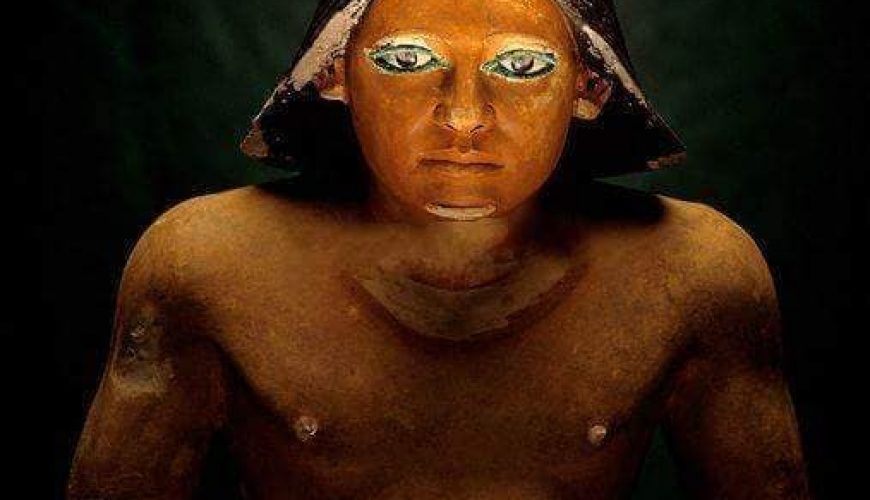The statue speaks about itself.
The statue expresses cultural life and its importance in ancient Egypt.
“The Two Hundred Pound Statue”
#Egyptian_writer_statue
This statue was found in Saqqara in Giza by the Egyptian Antiquities Authority in 1893. It dates back to the beginning of the Fifth Dynasty. It is made of coloured limestone, and the eyes are inlaid with precious stones. The artist used crystal with quartz stone to show the whiteness of the eye and use copper in making the eyelid. Reflection and the eye lights up as if it were natural. The statue is believed to be Khore, son of King Khafre, one of the kings of the Fourth Dynasty. It is now preserved in the Egyptian Museum.
The artist depicts the writer sitting cross-legged with his back straight in a way that shows the extent of the cognitive progress of the ancient Egyptian, as this session is similar to what they call in the modern era yoga because the blood circulation cuts a shorter and faster path to the brain and nourishes it, helping it to pay attention to what is thrown at it from the kings and princes and writes it as It is evident on the statue of his willingness to write.
As for the head of the statue, we find him raising his head attentively and wearing a wig that does not cover his ear, and this shows us the need to listen in this profession. It is believed that he was wearing a necklace, but it was stolen, and its traces remained on his neck. A sheet of papyrus that was used in writing at that time is placed on the foot. The tip of it in his left hand and his right hand held a feather and seemed to be missing.
What draws attention is the discharge between the writer’s body and his arms. This highlights the artist’s skill, mastery, and creativity and shows the details in the fingers of the hand, chest, shoulder areas, and even the details of the elbow.
Egypt Magic – The statue speaks about itself.
July 15, 2021
0 comment


Comment (0)